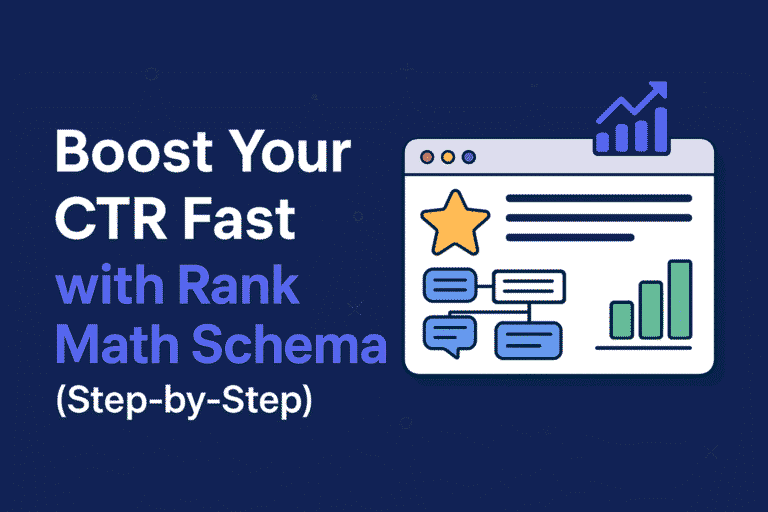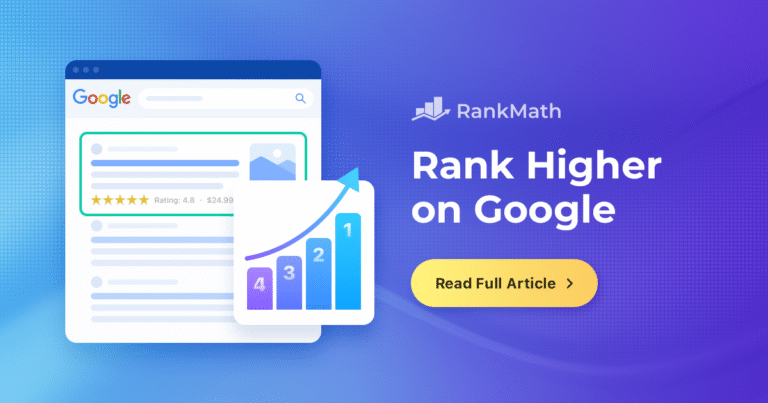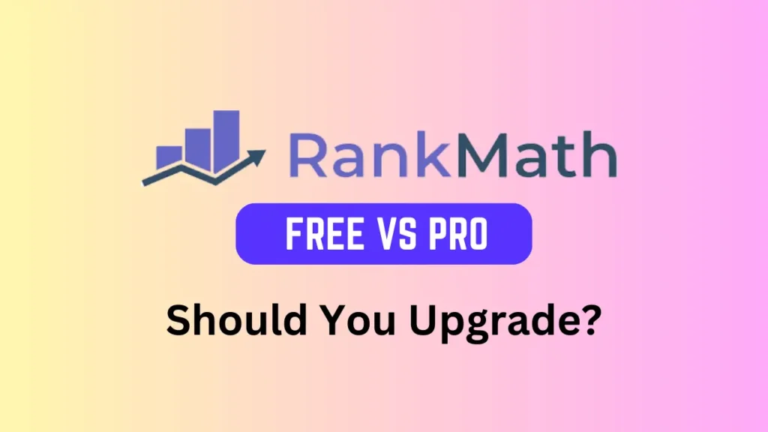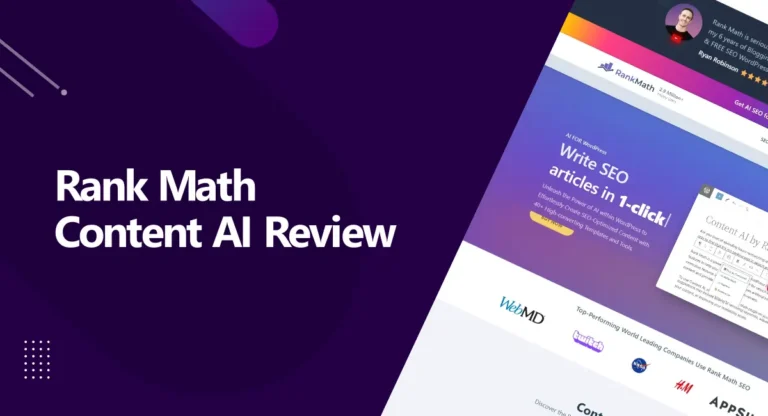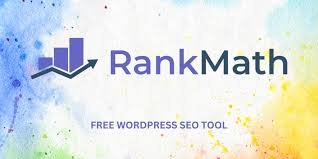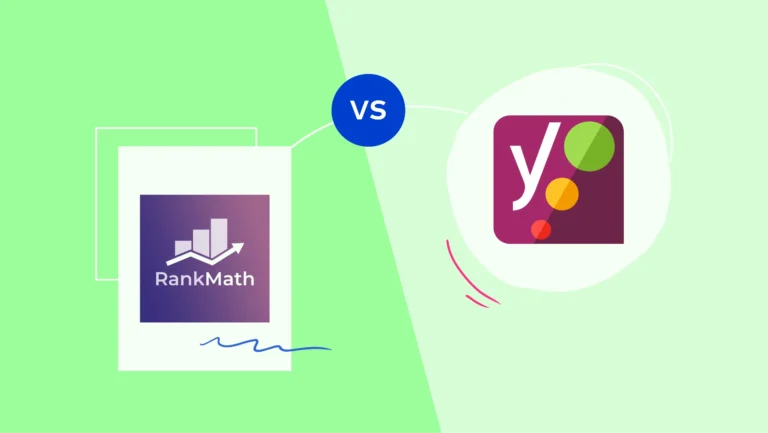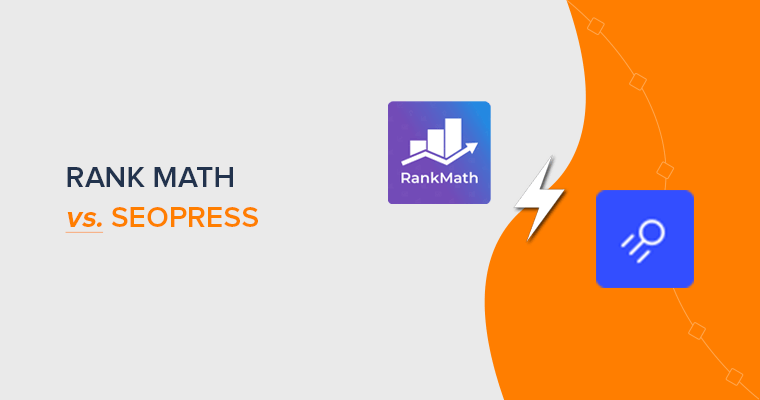Did you know that 46% of all Google searches are local? That’s nearly half! Local SEO in 2025 is no longer a nice-to-have, but a must-have.
If your business is not appearing in local search, you’re leaving money on the table. Don’t fret. I have a tool that can assist you in dominating: Rank Math.
Rank Math is not only an SEO plugin. It’s your local search secret tool. With Local Business Schema, keyword focus optimization, and inclusion in Google Knowledge Graph, Rank Math makes it simple to do local SEO.
This blog will walk you through step-by-step guidelines on how to improve your local SEO with Rank Math.
At the end of it, you will precisely know how to make your business visible in 2025. Ready to be a star in local searches? Let’s start!
Why Local SEO is Crucial in 2025
The world has changed. The pandemic changed how people shop, eat, and find services.
Local search is more critical than ever. Why? Because consumers want fast and convenient answers—right in their neighborhood. And with smartphones in almost every hand, it’s second nature to search “near me.”
Local SEO is not a nice-to-have in today’s mobile-first world. It’s a must. Consider this. How many times has it been since you’ve searched for something without putting your city or “near me” in there? Right.
Businesses that show up in those searches win. The ones that don’t? They’re off the map altogether.
But it’s not just about being found. It’s about staying ahead of the curve. Trends like voice search are booming. People aren’t just typing—they’re asking Siri or Alexa for recommendations.
And guess what? Voice searches are even more local. “Where’s the best coffee shop near me?” is a common query. If your business isn’t optimized for this, you’re missing out.
And then, naturally, there is AI. Search engines are intelligent. They already understand what you are looking for even before you can type in the search.
AI allows Google to understand intent, context, and location. This actually translates to your local SEO having to be more stringent than ever before.
And then there is the hyper-local targeting. Targeting by city will no longer cut it. You have to target neighborhoods, streets, and landmarks. Why? Because that is where your clients are.
So, how exactly does local SEO affect your business? Simple. Improved local SEO equals more exposure.
When you appear in local search, you receive more traffic. And increased traffic equals increased conversions.
Whatever it is – a call, a site visit, or a foot in your door – local SEO provides genuine results.
In 2025, the game is clear. If you’re not optimizing for local search, you’re falling behind.
But with the right strategies—and tools like Rank Math—you can dominate. Ready to take the lead? Let’s keep going.
What is Rank Math and Why It’s Perfect for Local SEO
If you’re operating a business in 2025, you need Rank Math. What is it? It’s not another SEO plugin.
It’s a WordPress revolution. Rank Math streamlines SEO so that anyone—yes, even beginners—can get the best out of their site. But here’s the thing: it’s ideal for local SEO.
Let’s break it down. Rank Math is full of local search features. First, Local Business Schema. Basically, an online business name tag for your business.
It informs the search engines who you are, where you are based, and what your business is about.
With Rank Math, it’s as easy as clicking some buttons. No coding. No angst. A few clicks, done.
And then there’s Focus Keyword Optimization. Want to rank for “best pizza in New York” or “plumber near me”?
Rank Math enables you to target these local keywords in a split second. It reads your content and provides real-time feedback on how to enhance it.
And then Google Knowledge Graph Integration. That’s a big deal. When someone is looking for your company, you want that nice little box with your company logo, address, and reviews to appear. Rank Math ensures that you’re included in that box.
And don’t miss Easy Meta Descriptions and Titles. These search results show up first. Rank Math assists you in crafting good titles and descriptions to attract clicks and views.
So why should Rank Math be on your “must-have” list for 2025? Because local SEO is not longer a nicety.
It’s a necessity. And Rank Math makes it easy, quick, and powerful. Whether you’re a local merchant or an enterprise with many locations, Rank Math provides the tools to dominate local search.
In an era where clicks are everything, Rank Math is your trump card. Fed up with driving your local SEO to new levels? Let’s continue.
Google Business Profile
A Google Business Profile (GBP), previously Google My Business, is your business online store on Google.
It’s the initial impression that appears when people search for your business or services in your area. Consider it your online business card—but so much better.
With a Google Business Profile, you can:
- Be found in local searches: When someone searches for “coffee shop near me,” your business can be seen on Google Maps and within the local pack (those initial 3 results).
- Show critical information: Your address, phone number, website, hours, and even images.
- Gather reviews: Positive reviews create credibility and bring more customers.
- Talk to customers: Respond to questions, post updates, and promote offers directly on your page.
But the problem is that having a profile is not enough. You need to amplify it. And that’s where tools like Rank Math come in. Rank Math enables you to connect your Google Business Profile to your site, make it consistent, and gain an edge in your local SEO.
In 2025, an optimized Google Business Profile is no longer an option—it’s essential. It’s how you stay seen, drive customers in, and stand out in a competitive landscape. Ready to maximize it? Let’s dive deeper.
Before you even begin using local SEO through Rank Math, there is one absolute requirement: you need to have a verified Google Business Profile (GBP).
Without it, your work will not go very far, since Google must believe in your business first before it can work for you.
Once you’re verified, the hard work starts—getting a good ranking isn’t automatic; it requires effort.
Begin sharing and publishing content that includes local search engine-friendly keywords such as “near me” or the name of your city.
Use Google Business Profile (GBP) along with your website. Make sure to use Rank Math to improve your local schema and optimize your meta titles.
Keep your Name, Address, and Phone (NAP) consistent everywhere.
Don’t forget to display good reviews from pleased customers—it’s positive word of mouth that enhances your credibility and ranking.
Accuracy matters a great deal: check your location, hours of operation, etc., to prevent confusing customers or eroding trust. And for goodness’ sake, don’t even think about buying reviews—Google knows whether reviews are genuine or not, and that will come back on you.
Basically, local SEO success relies on consistency, accuracy, and optimization. With Rank Math and a well-managed GBP, you’re set to dominate local search. Ready to get started? Let’s go!
Step-by-Step Guide to Dominating Local Search with Rank Math
Step 1: Set Up Local Business Schema
Local Business Schema is your business’ online nametag. It informs search engines about who you are, what you do, and where you are.
Doing this through Rank Math only takes a couple of clicks—and no coding is necessary. Here’s how to do it:

- Log into Your WordPress Backend: Access your site backend.
- Open Rank Math: Navigate to the Rank Math plugin.
- Activate Schema Module: If disabled, navigate to Rank Math > Dashboard > Schema (Structured Data) and activate it.
- Select Local Business Schema: Navigate to the page or post you want to add the schema. Scroll down to the Rank Math meta box. In the Schema tab, select Local Business.
- Fill in the Details: Give us your business name, address, phone number, and other details as may be applicable. 100% accuracy is needed—these will be shown in search results.
- Add Business Type: Select the most suitable category for your business (restaurant, plumber, retail store).
- Upload Your Logo: Upload your logo to make your listing more interesting.
- Save and Publish: Save all the completed fields, and publish the page.
Why This Matters: Local Business Schema helps Google understand your business better, increasing your likelihood of appearing in local search and the Google Knowledge Graph.
Step 2: Optimize for Local Keywords
To dominate local search, you need to target the right local keywords—the phrases people use to find businesses like yours in their neighborhoods.
Be sure to think in terms of “near me,” “best [service] in [city],” or “[business] [neighborhood].” Start by researching using tools like Google Keyword Planner, AnswerThePublic, or Google Trends.
For instance, if you have a coffee shop business in Chicago, pick keywords such as “best coffee shop in Chicago” or “coffee near me.” Once you have your keywords, optimize with Rank Math’s Focus Keyword feature.
Go to the page or post you wish to optimize, scroll down to the Rank Math meta box at the bottom of the editor, and input your focus keyword.
Rank Math will scan your text and give you instant improvement suggestions, like adding your keyword in the title, meta description, or alt tag.
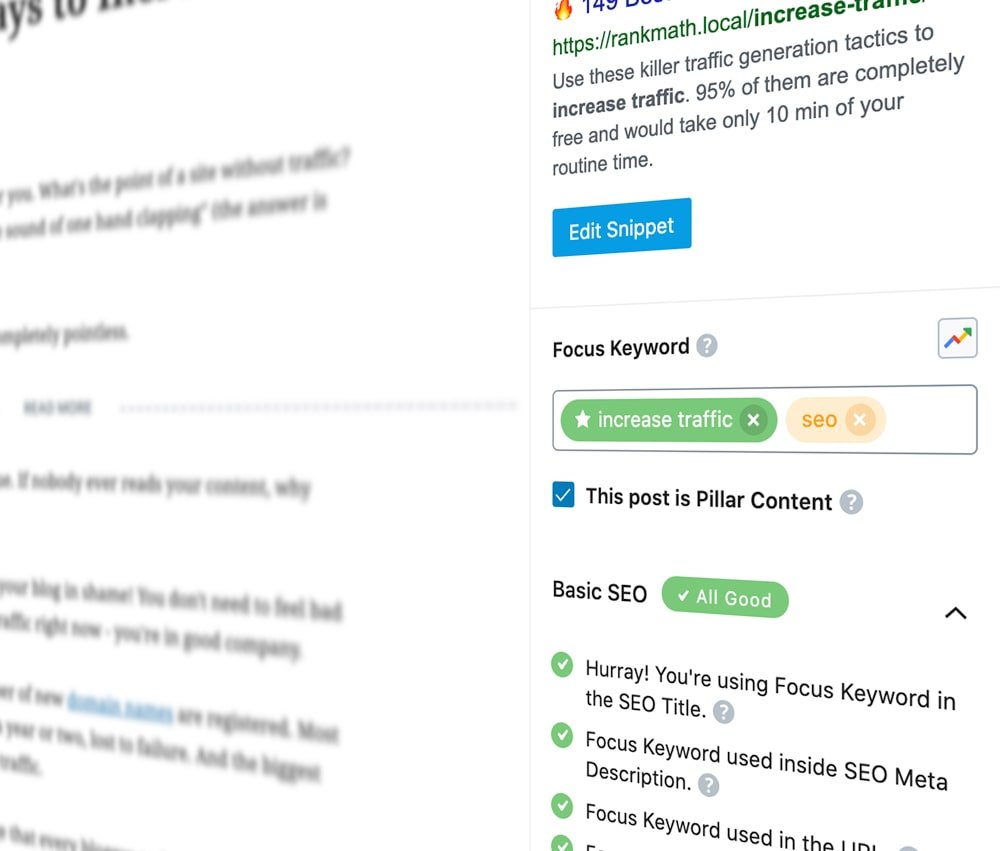
Install Rank Math and add local keywords, and you’ll get locally searchable for search and attract more customers to you. Ready? Let’s move to the next step!
Step 3: Create Location-Specific Content
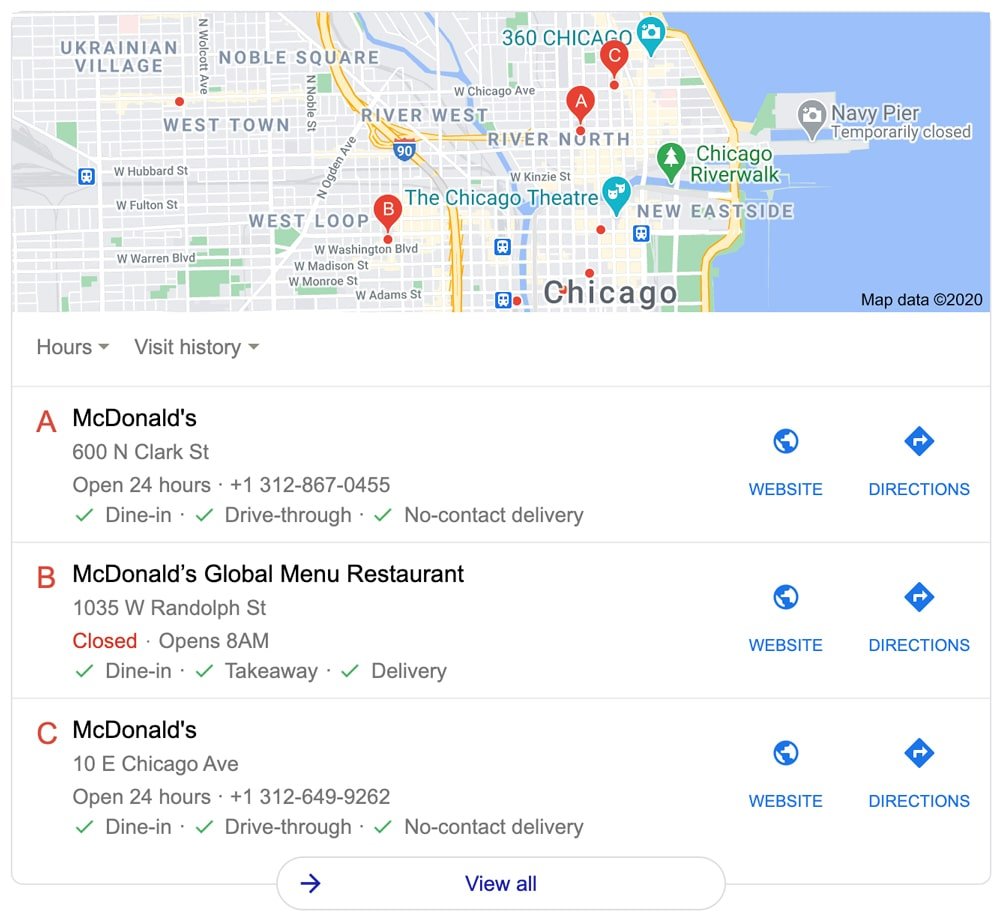
Want to rule local search? Location-based content is your magic bullet. Why? Because Google loves content that’s regional-specific. Think about it: when a person searches for “best pizza in New York,” they don’t want generic tips on pizza—they want region-specific recommendations. That’s where you come in.
Start by creating blog posts, landing pages, or even service pages that target your area. For example:
- “Top 5 Coffee Shops in Chicago”
- “Why [Your Business] is the Best Plumber in Dallas”
- “Affordable Haircuts in Downtown Los Angeles”
But creating the content isn’t enough. You need to optimize it. Here’s how Rank Math can help:
- Use Local Keywords: Add your focus keyword (e.g., “plumber in Austin”) in the title, headings, and first 100 words.
- Optimize Meta Titles and Descriptions: Use Rank Math’s meta editor to craft compelling titles and descriptions that include your location.
- Add Local Schema: Use Rank Math’s Schema feature to mark up your content with Local Business Schema.
- Include Internal Links: Link to other location-specific pages on your site to boost SEO.
Pro Tip: Add local images with alt text that includes your location (e.g., “coffee shop in Chicago”). This helps Google connect your content to the area.
By creating and optimizing location-specific content, you’ll not only rank higher in local search but also attract more customers who are ready to buy. Ready to take it to the next level? Let’s keep going!
Step 4: Optimize Google My Business (GMB) Listing
Your Google My Business (GMB) listing is the virtual front door of your business. It’s the first they’ll see when they search for you locally.
But there’s a catch: having a GMB profile alone isn’t enough. You need to optimize it—and that’s where Rank Math enters the equation.
Rank Math doesn’t integrate with GMB itself, but it does let you connect your site to your GMB listing in a way that increases local rankings. Here’s how:
- Consistent NAP Data: Rank Math maintains your Name, Address, and Phone (NAP) on your site consistent with your GMB listing. Any variation is detrimental to your rankings.
- Local Schema Markup: Rank Math Local Business Schema helps Google know your business better, which makes your GMB more discoverable.
- Location-accurate Content: Utilize Rank Math to develop location-accurate content based on your GMB keywords and categories.
Pro Tips for GMB Optimization:
- Complete Your Profile: Complete each section—photos, hours, services, and features.
- Receive Reviews: GMB positive reviews increase your rankings and credibility.
- Post Frequently: Utilize GMB posts to publish updates, promotions, and events.
By optimizing your GMB listing and syncing it with your website using Rank Math, you’ll create a powerful local SEO strategy that drives more traffic and customers. Ready to take action? Let’s move to the next step!
Step 5: Track and Analyze Performance
Do you want to check if your local SEO is working well? You can do this by keeping track of it, and Rank Math can help. Start by linking your Google Search Console to Rank Math.
This will give you important data like clicks, impressions, and keyword rankings. Use Rank Math’s Keyword Rankings tool to see how your local keywords (like “coffee shop near me”) are performing.
Check the Analytics tab to find out which pages are getting the most visits—if some are popular, make them even better.
Monitor your Click-Through Rate (CTR). If you are not achieving clicks with your titles and meta descriptions, visit Rank Math guidance and optimize them further.
You might also consider taking a quick peek at Google Business Profile insights to identify in which places customers are discovering your business.
If you monitor the way you do compared to industry norms, it allows you to recognize trends, rectify errors and make modifications in order to increase your rank within local searches. Ready for a boost of momentum? Start now!
Advanced Local SEO Strategies for 2025
To survive 2025, you need something more than a basic set of skills. The time to focus on local SEO is now. Here’s why and how to do it:
- Use AI and Machine Learning: Using AI, Rank Math software employs machine learning to study the trend on the search and recommend hot local keywords based on the trending pattern. Allow machines to get into heavy thinking—machines can predict what your customers are about to look for even before they search.
- Voice Search Target: Voice search is getting extremely popular. Rather than using a keyboard, people are seeking suggestions from Siri or Alexa. Watch out for queries such as “Where is the nearest pizza around me?” or “Who is the person who repairs plumbing in [city]?” Optimize with Rank Math for these types of questions.
- Construct Local Backlinks and Citations: Obtaining backlinks from local websites such as news outlets or directories helps increase your trustworthiness. Utilize Rank Math to learn about the possibilities and monitor progress. Also, have your business properly listed on sites such as Yelp and Yellow Pages.
- Target Specific Local Neighborhoods: If you have multiple locations target specific neighborhoods. Develop content pertinent to those communities. For example, a bakery in New York could target terms such as “best Brooklyn cupcakes” or “desserts near Times Square.”
Common Local SEO Mistakes to Avoid
Even the best local SEO strategy can prove fruitless if you commit a few common mistakes. Keep in mind these fundamentals:
- Not Placing a Top Priority on Local Keywords: Unless you incorporate phrases such as “near me” or “[service] in [city]” into your keywords, you risk losing target customers. Utilize Rank Math to identify and optimize such keywords.
- Not Keeping Your NAP Information Current: Your Name Address and Phone number (NAP) must be identical everywhere—on your website Google Business Profile and other directories. Otherwise, it confuses customers as well as search engines.
- Ignoring Reviews on the Internet: Reviews establish trust and will help improve your rankings. Ask happy customers to write positive reviews. Answer all reviews, good or bad, to show that you pay attention.
- Not Optimized for Mobile: Over half of local searches are performed on mobile devices. If you’re not optimized for mobile, you’re losing business. With Rank Math, you can make sure your site is fast and works great on any device.
Don’t make these mistakes, and you’ll be at the top of the search results for local SEO.
Final Thoughts
Local SEO is the future and it is here to stay. In 2025, those who own local search will be successful while others will fall behind.
You have everything you need to reach the top of search results with Rank Math. You are able to add Local Business Schema with ease, boost voice search and reduce errors. Success is easy to accomplish.
Remember, local SEO is not a one-time task. You need to keep updating your content, track your progress and evolve with upcoming trends. Be consistent, be precise and most importantly easy to locate.
Are you ready to take your business to the next level? Start using these strategies today. With Rank Math reigning, local search in 2025 is not a dream; it’s a certainty. Let us get started!
Common questions about local SEO and Rank Math:
What is local SEO, and why is it important?
Local SEO helps your business show up in local searches like “near me” or “[service] in [city].” It’s crucial because 46% of all Google searches are local. If you’re not optimizing for local search, you’re missing out on customers.
How does Rank Math help with local SEO?
Rank Math simplifies local SEO with features like:
Local Business Schema
Focus Keyword Optimization
Google Knowledge Graph Integration
Easy Meta Titles and Descriptions
It’s a one-stop solution to dominate local search.
What are the best practices for local SEO in 2025?
Optimize for local keywords (e.g., “near me”).
Keep your NAP (Name, Address, Phone) details consistent.
Encourage positive reviews and manage your online reputation.
Create location-specific content.
Use tools like Rank Math to track and improve performance.
Can I use Rank Math for multi-location businesses?
Yes! Rank Math is perfect for multi-location businesses. Use hyper-local targeting to create content for each location. Optimize each site or page with local keywords and schema.
How do I track my local SEO performance?
Use Rank Math’s analytics tools to monitor:
Keyword rankings
Traffic and CTR (Click-Through Rate)
Google Search Console data
Google Business Profile insights
Do I need a Google Business Profile for local SEO?
Yes! A verified Google Business Profile (GBP) is essential. It helps you show up in local searches, Google Maps, and the Knowledge Graph.
How often should I update my local SEO strategy?
Regularly! Local SEO trends change fast. Review your strategy at least every 3-6 months to stay ahead.
Can Rank Math help with local backlinks?
While Rank Math doesn’t directly build backlinks, it helps you track and optimize your SEO efforts, making it easier to identify backlink opportunities.


